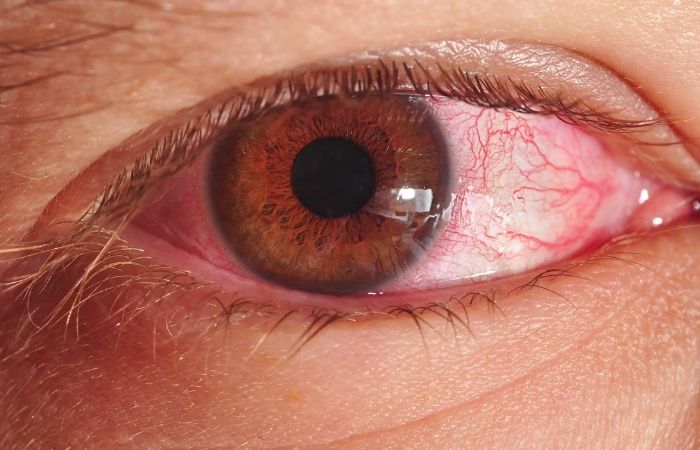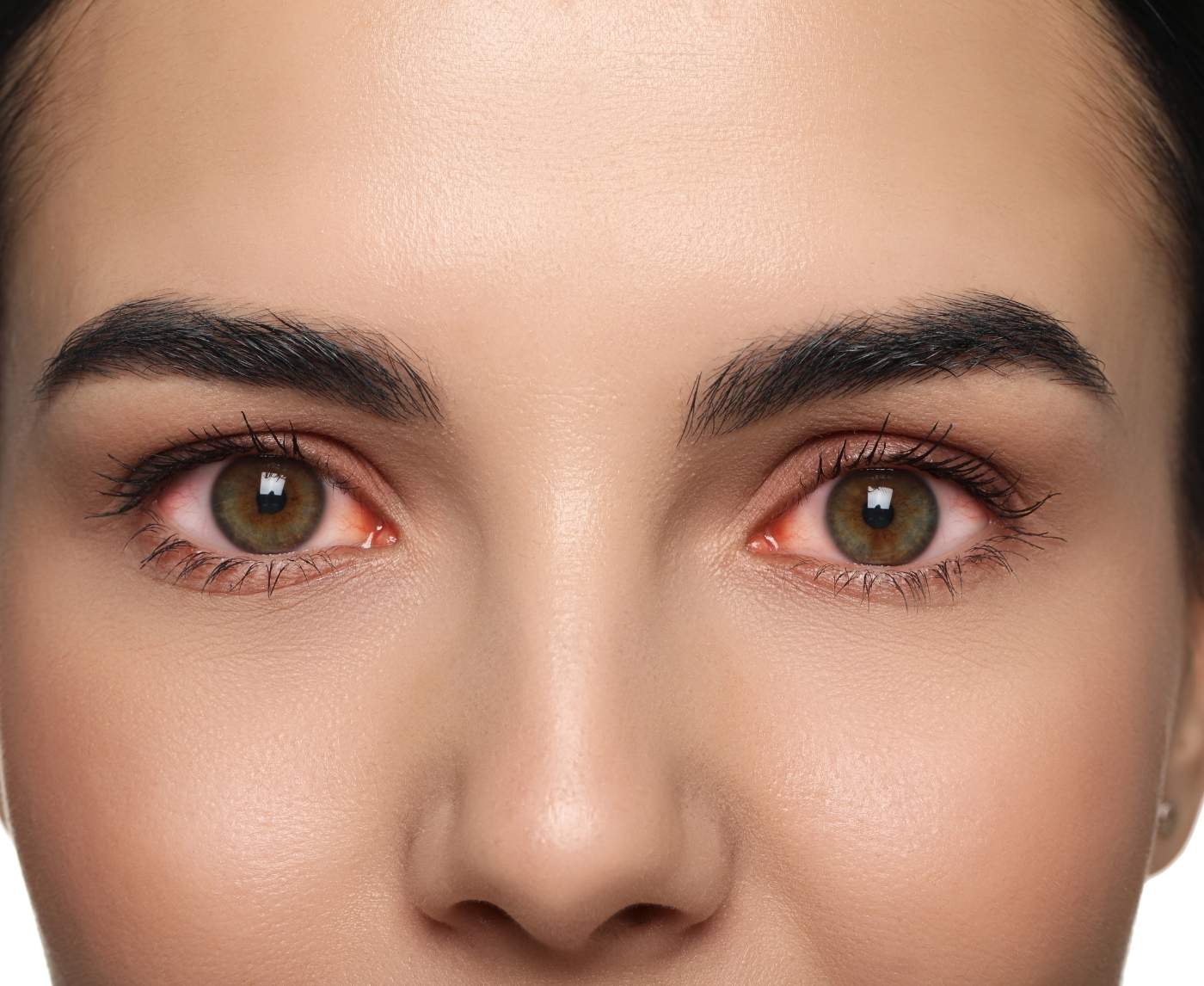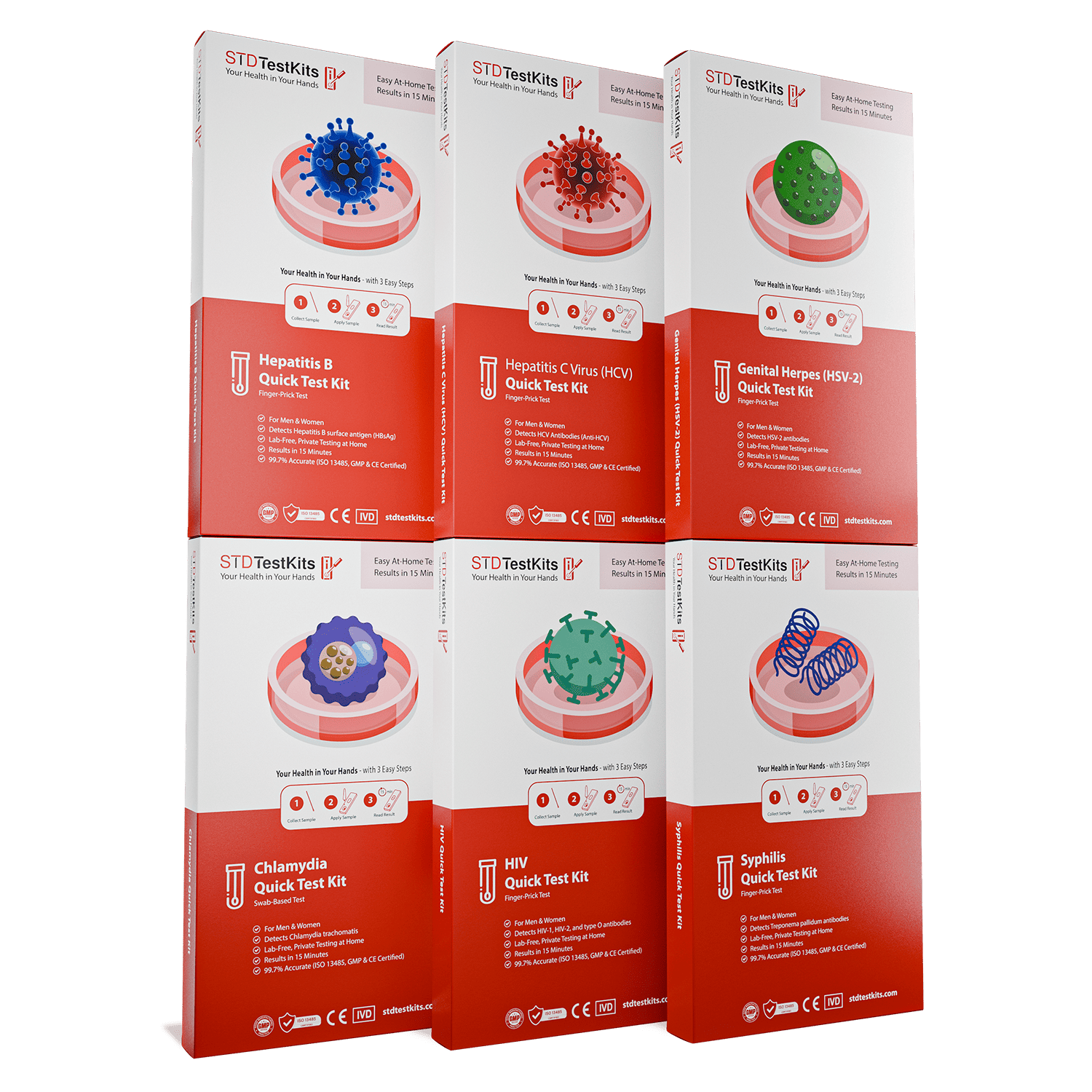The Numbers Don’t Lie Why Non-Sex Workers Often Have Higher Undiagnosed STD Rates
Quick Answer: STD eye infections can mimic pink eye or allergies but are caused by bacteria or viruses like chlamydia, gonorrhea, or herpes. They often appear after unprotected oral or genital contact and require prompt testing and treatment.
This Isn’t Just Seasonal Allergies, And Here’s Why
Eye symptoms like redness, tearing, or irritation usually make people reach for allergy drops or wait it out. But when an eye infection comes on fast, includes discharge, or spreads from one eye to the other, it’s time to think beyond pollen. Especially if those symptoms showed up after a sexual encounter, even if it was just oral sex.
Infections like gonorrhea and chlamydia can cause a type of conjunctivitis that looks a lot like pink eye. The difference? STD-related conjunctivitis is typically more aggressive. You might notice:
Figure 1. Comparing standard pink eye with STD-caused eye infections. STD symptoms tend to be more painful and discharge-heavy, with a possible sexual exposure history.
How Do STDs Even Get Into Your Eyes?
Sexually transmitted infections reach the eyes through direct contact with infected fluids. That might be semen, vaginal fluid, or even saliva from a person who has an oral STI. The most common transmission routes include:
- Unprotected oral sex followed by eye rubbing
- Touching the genitals and then touching your eyes
- Facial ejaculation with infected semen
- Direct oral contact with the eye area during foreplay
Even if you didn’t have penetrative sex, you can still catch something in your eye. The eye’s mucous membranes are highly absorbent, which makes them vulnerable to infection.
One 2021 case study from the Journal of Ophthalmic Inflammation and Infection documented a patient who developed gonorrheal conjunctivitis after a single oral sex encounter with no genital symptoms. This isn’t rare. Eye-based transmission may be underreported because many people, and even providers, don’t immediately connect it to STDs.

People are also reading: Allergic to PrEP? Here’s How to Prevent HIV Without It
“I Thought It Was Just Dry Eyes”
Adriana, 24, first noticed the redness after a weekend trip with her partner. She blamed the hotel’s air conditioning and the dusty roads they’d driven on. When her right eye started swelling shut, she tried warm compresses and allergy drops. Nothing worked.
“I didn’t want to go to urgent care and seem dramatic,” she said. “But when the crust made it hard to open my eye, I panicked.”
By the time Adriana saw a doctor, she had a full-blown chlamydial eye infection. She was prescribed antibiotics and recovered fully, but only after a week of discomfort and fear.
This is how many STD-related eye infections go unnoticed: they masquerade as dryness, irritation, or seasonal issues, until they don't.
Which STDs Can Infect the Eyes?
Let’s break down the four most common culprits that can affect the eyes, and what symptoms to watch for:
Figure 2. STD eye infection symptoms and routes. Some STDs can cause irreversible eye damage without early treatment.
In rare cases, advanced HIV can also affect the eyes through opportunistic infections or retinal inflammation. If you’re immune-compromised, any unusual eye symptoms should be evaluated quickly.
When to Test (And What Kind of Test You’ll Need)
If you’ve recently had unprotected sex and now have eye symptoms that aren’t going away, it’s time to test. But what kind of test do you need?
Eye infections caused by STDs are typically diagnosed by testing for the infection at its source, meaning the genital, oral, or rectal area. You don’t need to swab your eye (unless a doctor orders it). Most at-home test kits use urine or oral swabs, which can detect infections like chlamydia, gonorrhea, or herpes even when the symptoms show up in unexpected places like your eye.
Testing too early can lead to false negatives, so here's what to keep in mind:
- Chlamydia and Gonorrhea: Best tested 7–14 days after exposure
- Herpes: Antibodies show up ~2–12 weeks after exposure; swab tests need active lesions
- Syphilis: Antibodies detectable 3–6 weeks after infection
If you're not sure which STD might be causing your symptoms, or you're dealing with multiple exposures, a Combo STD Home Test Kit can screen for several infections at once. It's discreet, fast, and shipped in plain packaging.
Why Waiting to Test Isn’t Always the Best Move
If your eye is producing thick discharge, you're feeling pain, or the redness is getting worse, don’t wait. These aren’t seasonal allergies. STD-related eye infections, especially gonorrhea, can escalate quickly, sometimes damaging the cornea or leading to permanent vision loss if untreated.
Even if your initial test is negative, your symptoms could be developing before the test window closes. In that case, you may need a second test 1–2 weeks later. And if symptoms worsen, don’t wait for retesting, see a provider immediately.
This is especially true for people who wear contacts or are immune-compromised. Infections can take hold faster and do more damage in these cases.
Eye STD Myths That Are Risking Your Vision
Most people don’t realize just how easy it is for STDs to infect the eye. And that misunderstanding can delay care. Let’s break down some dangerous myths.
Myth: You can’t get an STD unless you have sex.
False. Any contact with infected fluids, mouth, fingers, or toys, can transmit infections to the eyes.
Myth: You’d definitely have genital symptoms too.
Not always. Many people with chlamydia or gonorrhea are asymptomatic genitally but still spread infection through other contact.
Myth: If it’s just one eye, it’s probably allergies.
Wrong. STD conjunctivitis often starts in one eye and spreads to the other over time. The discharge, pain, or swelling is the giveaway, not the eye count.
Myth: Eye drops will fix it.
Not if it’s an STD. Standard antibiotic or allergy drops won’t treat infections like gonorrhea or herpes. You’ll need systemic treatment, often oral or IV antibiotics or antivirals.
How to Talk to a Doctor (Without the Awkwardness)
It can be intimidating to walk into an urgent care clinic and say, “I think I might have gotten an STD… in my eye.” But here’s the truth: providers have seen it before, and they want to help, not judge.
You don’t need to recount every detail of your sex life. Just say something like:
“I had unprotected contact recently, and now I have eye symptoms that aren't going away. I’d like to be tested for chlamydia, gonorrhea, and herpes.”
That’s it. You’re advocating for your health. And if you prefer not to say it face-to-face, many telehealth platforms offer chat-based or video STD consultations. You can also order tests online and avoid the conversation altogether, just make sure to follow up if symptoms persist.

People are also reading: What No One Tells You About Cleaning Sex Toys (and Why It Matters)
Your Test, Your Privacy, Your Power
We get it. Telling someone you think your pink eye might be an STD doesn’t feel good. But neither does living with uncertainty. The fastest path to clarity is action, specifically, testing. You don’t need to explain yourself to anyone. Not your friends, not your pharmacist, not even your partner right away. Just get answers.
Order a discreet test kit from STD Test Kits and take the first step on your own terms. Redness, pain, and discharge are signals, your body isn’t trying to shame you. It’s asking you to listen.
What Happens If You Ignore It?
Eye infections caused by STDs are not only painful, but they can also be deadly. If you don't treat gonorrhea, it can quickly damage the cornea, which can cause permanent scarring or blindness. Ocular syphilis can look like uveitis, which can cause blurry vision, floaters, and eventually damage to the optic nerve. Herpes infections in the eye can cause outbreaks that come back over and over again, which can hurt the eye's surface over time.
And here’s the thing: once vision damage begins, it may not be reversible. That’s why fast recognition and treatment matter so much. If you’ve had any of the following, don’t wait:
- Thick yellow or green eye discharge
- Eye pain with light sensitivity
- Sudden blurry vision or floaters
- Red eye that spreads after oral or genital contact
Even if your partner has no symptoms, you can still contract an ocular infection. Many STDs are asymptomatic, especially in early stages, and some people carry them without ever knowing.
Can You Still Infect Others?
Figure 3. How STD eye infections can spread — and simple ways to stop the cycle.
How Long Does It Take to Heal?
Most STD-related eye infections improve within 7–10 days once treatment begins. But the key word is “once.” The longer you wait to treat, the longer recovery can take, and the more likely permanent damage becomes.
Gonorrhea and chlamydia usually respond quickly to oral or injectable antibiotics. Herpes may need a longer course of antivirals, especially for recurrent outbreaks. Syphilis requires IV penicillin in most cases, with close monitoring to track neurological or ocular complications.
Follow-up care matters, too. If your provider recommends a retest after treatment, don’t skip it. Reinfection is common, especially if partners go untreated.
Testing After Exposure: What’s the Timeline?
Knowing when to test can make or break your results. Here’s a simple guide based on typical incubation periods and test sensitivity:
Figure 4. Optimal testing windows for STDs with ocular symptoms. Retesting may be needed depending on treatment, exposure, and symptoms.
If your symptoms show up before these windows, you can test early and retest later, or go to a clinic for faster evaluation and direct eye swabs if needed.
FAQs
1. Can you really get an STD in your eye?
Yes, and it's more common than you think. Your eye is lined with mucous membranes, just like genitals or the inside of your mouth. If infected fluids (think semen, vaginal secretions, or even saliva from someone with oral herpes) come into contact with your eye, that’s enough. You don’t need to have full-blown sex to get an STD in your eye. One steamy oral hookup and a careless rub of the eye later? Boom. Infection.
2. What does an STD eye infection actually feel like?
At first, a lot like regular pink eye, maybe a little gritty, red, or watery. But within a day or two, things usually escalate. We’re talking thick yellow-green discharge, crust that seals your eyelid shut, sharp pain, or a “sandpaper under the eyelid” feeling. If you’ve ever had gonorrhea in the eye (yes, that’s real), it’s intense and comes on fast. If your eye symptoms go from annoying to alarming, don’t wait it out.
3. Is pink eye ever a sign of herpes?
It can be. Herpes doesn’t just show up as cold sores or genital blisters, it can infect the eye too. Ocular herpes might cause light sensitivity, blurry vision, or even tiny blisters around the eyelid. Sometimes people don’t realize it’s herpes until they have recurring outbreaks or scarring on the cornea. If you’ve had recent oral sex or have a partner with cold sores, it’s worth considering.
4. How do I tell the difference between allergies and an STD in my eye?
Here’s a quick cheat: if it’s watery, itchy, and both eyes are affected evenly, it’s probably allergies. If it’s goopy, painful, only in one eye, and showed up after a hookup? You should test. STD eye infections usually come with thick discharge, rapid swelling, or symptoms that don’t get better with your usual allergy meds. Your body’s waving a flag. Don’t ignore it.
5. Can eye infections from STDs go away without treatment?
Some might fade a bit, but that doesn't mean the infection is gone. And “waiting it out” with something like gonorrhea in your eye is a dangerous gamble, it can cause permanent damage. Plus, even if symptoms ease up, you can still be contagious. Bottom line: get tested, get treated, get clear.
6. Do I have to tell my eye doctor it might be an STD?
If you want the right treatment? Yes. But you don’t have to write them a novel. You can say something simple like, “I had recent sexual contact and now have eye symptoms, I’d like to be tested for STDs too.” Most doctors would rather hear that than treat it like basic pink eye and miss the actual cause.
7. Can I still wear contacts if I have an eye STD?
Hard no. Contacts trap bacteria and make things worse, especially if you’re dealing with discharge or inflammation. Ditch them until your eye is fully healed and your provider gives the green light. And don’t reuse old lenses or cases afterward, those things can harbor bacteria long after symptoms are gone.
8. Is it possible to spread an eye STD to someone else?
Yup. If you’ve got something like chlamydia or gonorrhea in your eye, it can be spread through hand-to-hand contact, shared towels, pillows, or even a steamy makeout session if there’s fluid involved. So yes, that eye goo could put someone else at risk. Be kind. Don’t share stuff and wash your hands obsessively until treatment is done.
9. What if my partner gets red eyes after we hooked up?
That’s your sign to talk, not panic. Say something like, “Hey, this might sound weird, but I read STDs can affect the eyes, and since we hooked up, I’ve noticed something off. Want to test just to be safe?” That convo might feel awkward, but it could save them from complications, and help you both feel more in control.
10. Which test should I use if I think my eye infection is from an STD?
Go for a Combo STD Test Kit if you’re not sure what caused it. It checks for the big ones, chlamydia, gonorrhea, syphilis, herpes, all in one. You don’t need to swab your eye either. A urine or oral swab test can still detect the infection that made its way to your eye.
Eyes on the Truth: Why Testing Matters More Than Guessing
What looks like pink eye might not be. And what feels like seasonal allergies could be your body trying to tell you something. Don’t ignore eye symptoms that start after sexual activity, worsen with time, or don’t respond to basic care.
Whether it’s gonorrhea, chlamydia, or another hidden culprit, the answers you need are just a test away. No doctor’s office. No awkward waiting room. Just you, your health, and the clarity you deserve.
Don’t wait and wonder, get the clarity you deserve.
How We Sourced This Article: We combined current guidance from leading medical organizations with peer-reviewed research and lived-experience reporting to make this guide practical, compassionate, and accurate. In total, around fifteen references informed the writing; below, we’ve highlighted six of the most relevant and reader-friendly sources.
Sources
1. American Academy of Ophthalmology – Ocular Syphilis Overview
2. Chlamydial Conjunctivitis: Symptoms, Transmission, and More | Medical News Today
3. Gonococcal Conjunctivitis: Symptoms, Treatment, and More | Healthline
4. Gonococcal Conjunctivitis — StatPearls
5. Types of Pink Eye: Bacterial, Viral and Allergic Conjunctivitis | All About Vision
6. Chlamydial Adult Inclusion Conjunctivitis – Clinical Guidance | The College of Optometrists
About the Author
Dr. F. David, MD is a board-certified infectious disease specialist focused on STI prevention, diagnosis, and treatment. He blends clinical precision with a no-nonsense, sex-positive approach and is committed to expanding access for readers in both urban and off-grid settings.
Reviewed by: Jenna W., MSN, APRN | Last medically reviewed: September 2025






